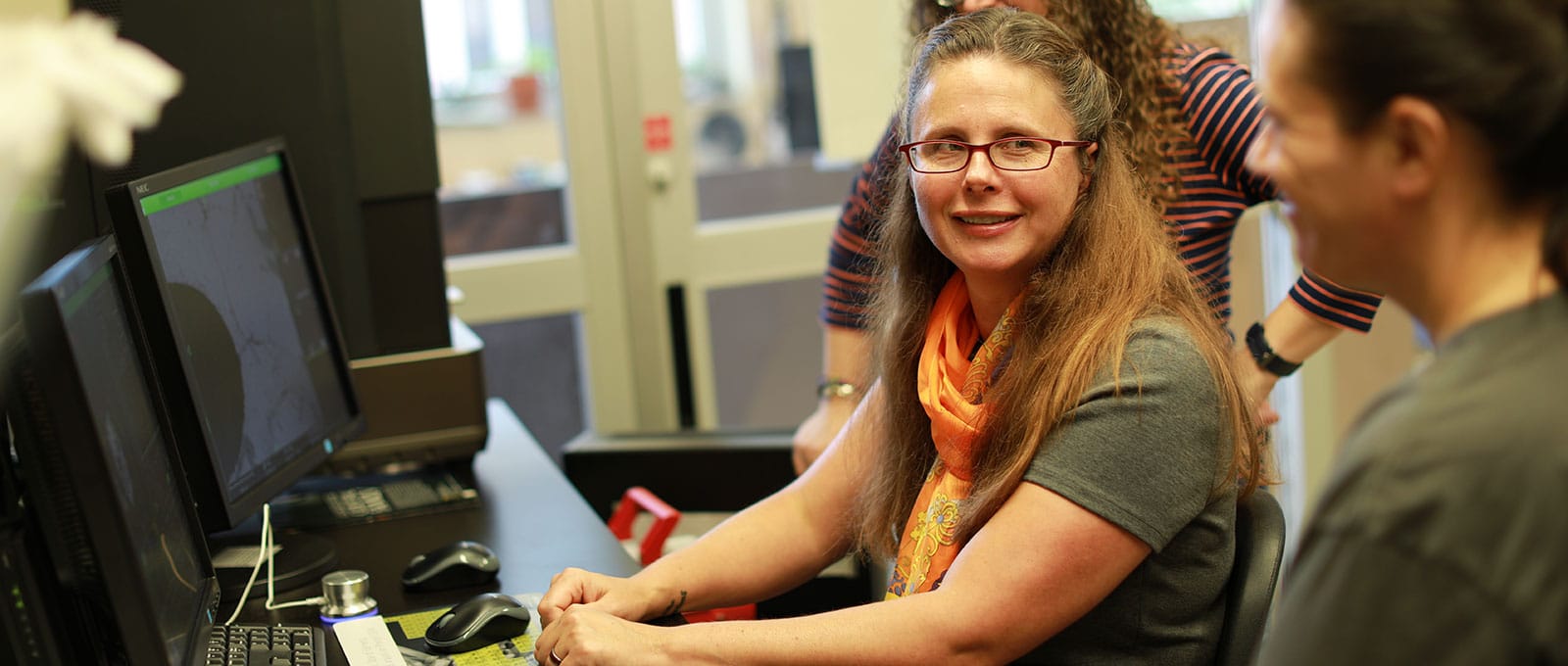
Molly McCanta, Gerald D. Sisk Associate Professor of Petrology and Planetary Geoscience, will work with students to open NASA core samples from Apollo 17 that have been sealed since 1972.
Molly McCanta, who grew up in Seattle, decided to be a geologist when she visited her grandparents in Eastern Washington after the Mount St. Helens eruption. “I still have bags of ash that I collected when I was five,” says McCanta. “Volcanoes fascinated me.”
McCanta got her undergraduate geology degree at the University of Oregon and her master’s and PhD at Brown University, where her thesis was on The Effect of Oxygen Fugacity and Volatile Content on Martian and Terrestrial Magmatic Evolution. “Basically, on things that started out molten and either made it to the surface or didn’t make it to the surface.”
She did her postdoctoral work at the Lunar and Planetary Institute in Houston and at Cal Tech and then taught at Tufts University.
McCanta holds the professorship that Karen D. Sisk established in memory of her husband Gerald, a cofounder of Jewelry TV. “Rocks and minerals were what he was interested in,” says McCanta. “The professorship helps me fund the research that I’m doing and that our grad students are doing. It’s an added bonus that makes it very attractive to stay here at UT and research here. It alleviates some of the pressure on me for making sure there’s continuity in the funds coming in for funding basic research and student research. It also enables us to increase what grad students are paid, which means we can attract better students.
The professorship helps me fund the research that I’m doing and that our grad students are doing.
– Molly McCanta, Gerald D. Sisk Associate Professor of Petrology and Planetary Geoscience

“Right now we have a student who looks at certain minerals and how elements are divided between those minerals deep in the earth and looking at how minerals alter on the surface of Venus, a better understanding of how glass behaves under pressure and in oxidizing conditions on earth and the moon.”
This summer McCanta is preparing to open up a NASA core sample from Apollo 17, which was drilled out of rock between the Sea of Tranquility and the Sea of Serenity at a depth of about 40 centimeters and has been kept sealed since 1972. She and her students will sit down with the curators at the Johnson Space Center in Houston and create a plan for how to open up the core and investigate and catalog its contents.
Analysis of the samples could help establish if there is water under the moon’s surface.
“Water contains hydrogen, an element that diffuses very fast on the surface of the moon,” says McCanta. “By studying these underground samples, we might be able to better observe the presence of hydrogen.”
